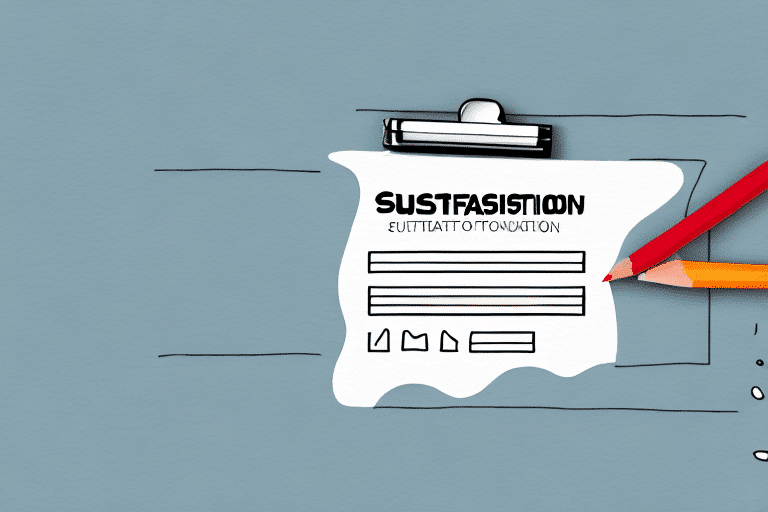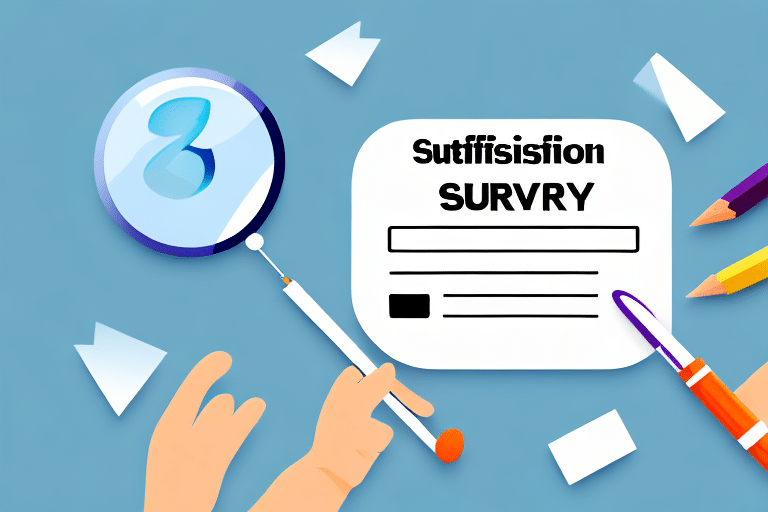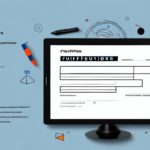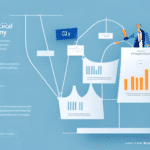Crafting an Effective Customer Retention Questionnaire
As a business owner, understanding the importance of retaining customers is crucial. While acquiring new customers is essential for growth, maintaining the satisfaction of existing ones is equally vital. One of the most effective strategies for customer retention is collecting feedback through a well-designed customer retention questionnaire. This article delves into the nuances of creating an effective questionnaire and how it can propel your business forward.
Importance of Customer Retention
Customer retention plays a pivotal role in the sustained growth of your business. According to a study by Bain & Company, increasing customer retention rates by just 5% can boost profits by up to 95%. Loyal customers not only generate repeat business but also act as brand ambassadors, recommending your services or products to others, thereby expanding your customer base organically.
Moreover, retaining customers allows you to gather invaluable insights into your products or services' effectiveness. This feedback is instrumental in making informed improvements, ensuring that your offerings remain aligned with customer needs and preferences. A strong focus on customer satisfaction fosters a positive brand reputation and builds long-term relationships, opening avenues for upselling and cross-selling opportunities.
The Role of Questionnaires in Customer Retention
A customer retention questionnaire serves as a strategic tool to gather structured feedback from your clientele. It helps identify areas where your business excels and pinpoint aspects that require enhancement. By understanding what your customers value most, you can tailor your business strategies to meet their expectations more effectively.
The design and phrasing of the questionnaire are critical to obtaining high-quality feedback. A well-crafted questionnaire will elicit clear and actionable responses, while a poorly designed one may result in ambiguous or incomplete data. Offering incentives, such as discounts or entry into a prize draw, can also increase participation rates and the quality of responses.
Defining Your Objectives
Before creating your questionnaire, it's essential to define clear objectives. Determine what you aim to learn from your customers and identify the primary areas of your business you wish to improve. Are you looking to enhance customer service, product quality, or overall user experience? Clearly defined goals will guide the formulation of relevant questions that align with your business needs.
Consider a mix of open-ended and closed-ended questions to balance qualitative and quantitative data. Open-ended questions provide deeper insights into customer sentiments, while closed-ended questions offer specific, measurable data.
Selecting the Right Questions
The effectiveness of your questionnaire hinges on the questions you choose to ask. Aim for questions that yield actionable insights into your customers' experiences and expectations. Examples of impactful questions include:
- How satisfied are you with our products/services?
- What do you value most about our business?
- What areas do you believe need improvement?
- Would you recommend our business to others?
- How frequently do you use our products/services?
- What motivates you to remain a loyal customer?
- What additional products or services would you like us to offer?
Ensure that your questions are neutrally worded to avoid biasing responses. Organize questions logically, starting with general inquiries before moving to more specific ones to maintain respondent engagement.
Designing Your Questionnaire
The design of your questionnaire significantly impacts the quality of the responses you receive. Here are some best practices to consider:
- Keep It Concise: A shorter questionnaire is more likely to be completed. Aim for brevity without compromising on the quality of information collected.
- User-Friendly Format: Use a clear and organized layout with well-labeled sections to enhance readability.
- Provide Clear Instructions: Offer guidance on how to complete the questionnaire to ensure accurate responses.
- Incentivize Participation: Encourage customers to complete the survey by offering rewards, such as discounts or exclusive offers.
Additionally, ensure that your questionnaire is mobile-friendly, as a significant portion of respondents may access it via smartphones or tablets.
Administering Your Questionnaire: Online vs. Paper Surveys
Choosing the right medium for administering your questionnaire is crucial. Both online and paper surveys have their advantages and disadvantages:
Online Surveys
- Advantages: Cost-effective, easy to distribute, and can reach a broader audience quickly. Online surveys can also incorporate logic to customize the questionnaire based on previous answers.
- Disadvantages: May exclude respondents who have limited internet access or are less tech-savvy.
Paper Surveys
- Advantages: More personal and can be distributed in settings where online access is limited. They may also garner higher response rates in certain demographics.
- Disadvantages: Higher costs due to printing and manual data entry requirements.
Choose the method that best aligns with your target audience and available resources. In some cases, a mixed-method approach may yield the best results.
Analyzing Questionnaire Results
Collecting responses is just the first step; analyzing the data effectively is where real insights are gained. Follow these steps for thorough analysis:
- Data Cleaning: Remove incomplete or inconsistent responses to ensure data integrity.
- Categorization: Organize responses based on common themes or objectives established earlier.
- Statistical Analysis: Utilize statistical tools to identify trends, patterns, and significant correlations within the data.
- Visualization: Create charts and graphs to represent data visually, making it easier to interpret and present findings.
Tools like SurveyMonkey and Tableau can assist in efficiently analyzing and visualizing your survey data.
Implementing Feedback for Improvement
The true value of a customer retention questionnaire lies in its implementation. Use the insights gained to make informed improvements to your business operations. Here’s how to effectively utilize the feedback:
- Address Pain Points: Identify recurring issues or concerns highlighted by customers and prioritize them for resolution.
- Enhance Strengths: Recognize areas where your business excels and explore ways to further capitalize on these strengths.
- Innovate Offerings: Consider customer suggestions for new products or services, aligning them with your business strategy.
- Communicate Changes: Inform your customers about the changes made based on their feedback, reinforcing that their opinions are valued and acted upon.
By demonstrating that you value and act on customer feedback, you build trust and encourage long-term loyalty.
Measuring the ROI of Customer Retention Strategies
Assessing the return on investment (ROI) of your customer retention strategies is essential to determine their effectiveness. Here's how to measure ROI:
- Track Retention Rates: Monitor changes in your customer retention rates before and after implementing your strategies.
- Analyze Revenue Growth: Evaluate the impact on your revenue by comparing sales figures over time.
- Customer Lifetime Value (CLV): Calculate CLV to understand the long-term financial value of retained customers.
- Cost-Benefit Analysis: Compare the costs associated with your retention strategies against the financial benefits gained from increased loyalty.
Effective measurement allows you to refine your strategies, ensuring that your efforts contribute positively to your business's bottom line.
Case Studies: Success Stories in Customer Retention
Numerous companies have successfully utilized customer retention questionnaires to enhance their business operations. For instance, Citibank employs customer surveys to refine its branch services, ensuring they meet customer expectations. Similarly, American Express uses surveys to gauge customer satisfaction and identify opportunities for new product offerings. These examples underscore the effectiveness of customer retention questionnaires in driving business success.
Continuous Improvement: Keeping Your Questionnaire Relevant
To maintain the effectiveness of your customer retention questionnaire, regular updates are necessary. Here are some tips for continuous improvement:
- Regular Reviews: Revisit and revise your questionnaire every 6-12 months to ensure it aligns with your evolving business goals and market trends.
- Incorporate Feedback: Solicit feedback from customers on the questionnaire itself to identify areas for improvement.
- Stay Current: Adapt your questions to reflect changes in your products, services, or industry standards.
By keeping your questionnaire dynamic and responsive to both business and customer needs, you ensure ongoing relevance and effectiveness.
Conclusion: The Critical Role of a Well-Crafted Customer Retention Questionnaire
A meticulously designed customer retention questionnaire is an indispensable tool for any business aiming to sustain and grow its customer base. By clearly defining your objectives, selecting the right questions, ensuring thoughtful design, effectively administering the survey, and diligently analyzing and implementing feedback, you can significantly enhance customer satisfaction and loyalty. Ultimately, these efforts contribute to a stronger brand reputation and improved financial performance.




















